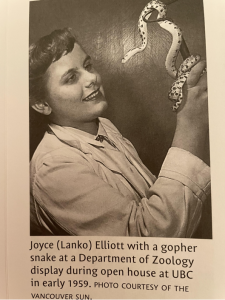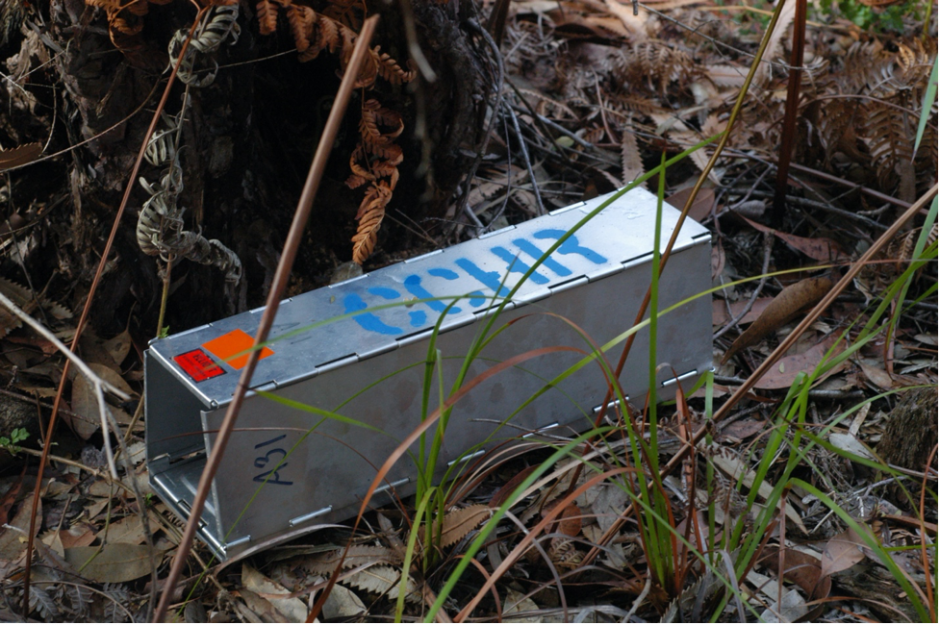How UBC’s Joyce (Lanko) Elliott Revolutionized Small Animal Science
February 11th is United Nations International Day for Women and Girls in Science. I’d like to share with you the story of a person who had a cornerstone impact in the world of terrestrial vertebrate research, and yet hardly anyone has heard of her.
 Born in 1938, Joyce Lanko picked up an interest in science at an early age while exploring her hometown of Winnipeg. She elected to venture west and attend UBC. First, she completed her Bachelor’s and then went on to complete a Masters. In her thesis, Lanko examined two species of Peromyscus in Southern Ontario (more commonly known as deer mice). Lanko successfully separated Peromyscus leucopus noveboracensis from Peromyscus maniculatus gracilis by devising a body measurements formula that separates these two species.
Born in 1938, Joyce Lanko picked up an interest in science at an early age while exploring her hometown of Winnipeg. She elected to venture west and attend UBC. First, she completed her Bachelor’s and then went on to complete a Masters. In her thesis, Lanko examined two species of Peromyscus in Southern Ontario (more commonly known as deer mice). Lanko successfully separated Peromyscus leucopus noveboracensis from Peromyscus maniculatus gracilis by devising a body measurements formula that separates these two species.
After teaching for a year at UBC (Lecturer in Zoology 1963-64), Lanko enrolled in a Ph.D. at Monash University (Melbourne, Australia) to study the biogeographical connections between Australian and South American marsupials. But, having met her husband and subsequently starting a family, Joyce Lanko (now Joyce Elliott) was unable to complete her studies — a common occurrence in the 1960’s when graduate studies were deemed incompatible for married women. This resulted in many women in STEM “dropping out”. Motherhood ended Joyce’s academic career but didn’t stop Joyce from having a pioneering role in the discipline she loved: the study of small animals.
Ever seen one of these? An animal trap, right?

Wiki common 2.0 license image licensed under the Creative Commons Attribution -Share Alike 2.0 Generic license. https://creativecommons.org/licenses/by-sa/2.0/deed.en
This folding aluminum contraption captures an animal alive for the purposes of studying it or relocating it. We have all seen them before. I remember my dad using one to capture a pesky possum that would intrude on our family home one summer when I was a child. This is an Elliott Trap.
Prior to 1965, when Joyce’s husband Kevin invented this trap, animal traps were much more menacing, less manageable, and less humane. This Elliott Trap was so cutting edge that 50 years later, it is still used around the world today to capture terrestrial vertebrates with minimal pain and trauma. The Elliott’s founded Elliott Scientific Equipment based out of Upwey, Australia which manufactured and shipped their traps around the globe. Joyce helped advise their clients on trapping methods plus answered biodiversity and animal behaviour questions.
Joyce’s years studying small mammals biology at UBC and Monash University caused her and her husband to rethink how traps should be designed which in turn revolutionized the capture of small animals. In the spirit of International Day for Women and Girls in Science, I’d like to thank you for reading this story about Joyce (Lanko) Elliott. A mother of three who though excluded from Accademia changed how academics and environmental consultants study small animals.
